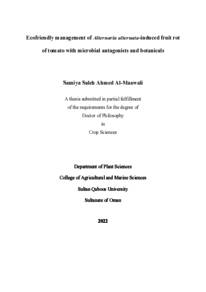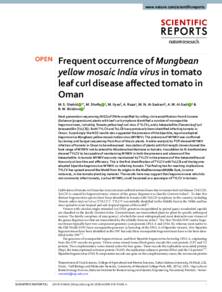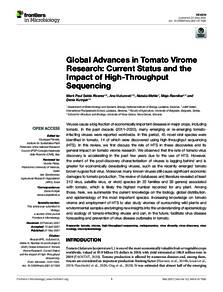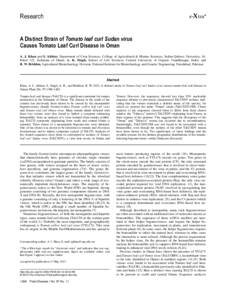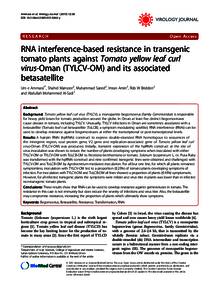وثيقة
Ecofriendly management of alternaria alternata-induced fruit rot of tomato with microbial antagonists and botanicals.
عناوين أخرى
الإدارة الصديقة للبيئة لعفن ثمار الطماطم الناجم عن فطر الألترناريا باستخدام الكائنات الدقيقة النافعة ومستخلصات النباتات
الناشر
Sultan Qaboos University.
ميلادي
2022
اللغة
الأنجليزية
الملخص الإنجليزي
Alternaria fruit rot caused by Alternaria alternata is one of the major constraints in
tomato (Solanum lycopersicum Mill) production in Oman. Synthetic chemical fungicides are
routinely used for the management of tomato fruit rots. Due to increasing public concern
about the harmful effects of chemical fungicides, the use of natural products or naturally
existing beneficial microorganisms has been preferred for the management of fruit diseases.
In this study, the potential of antagonistic yeasts and bacteria isolated from tomato
phyllosphere and fructoplane was evaluated against A. alternata-induced fruit rot of tomato.
Among the 72 bacterial and yeast isolates tested, a yeast (Meyerozyma guilliermondii
SQUCC-33Y) and two bacteria (Enterobacter roggenkampii SQUCC-LB11 and
Pseudomonas aeruginosa SQUCC-BY1) showed inhibitory activities against A. alternata and
formed clear zones of inhibition in a dual culture assay. Scanning electron microscopic
examination of the hyphae of A. alternata at the edge of inhibition zone revealed
morphological abnormalities. Postharvest treatment of tomato fruits with E. roggenkampii, P.
aeruginosa and M. guilliermondii reduced the fruit rot lesion size by 60%, 57% and 50%,
respectively, compared to untreated control under artificially inoculated conditions. Thin layer chromatography (TLC) fractionation followed by gas chromatography-mass
spectrometry (GC-MS) analysis of the antifungal metabolites produced by the antagonistic
yeast M. guilliermondii revealed the presence of different types of alkanes, predominantly
tricosane and pentacosane.
In vitro tolerance to pre-formed antifungal glycoalkaloids of tomato and biofilm
forming ability of M. guilliermondii strain SQUCC-33Y was evaluated. Glycoalkaloids were
extracted from immature green tomato fruits. Electrospray ionization-mass spectrometry
(ESI-MS) analysis showed the presence of α-tomatine, β-tomatine, tomatidine, lycoperoside
A, lycoperoside H, coumaric acid and sinapic acid in the glycoalkaloids preparation. In vitro
antifungal assays showed that both M. guilliermondii SQUCC-33Y and A. alternata were
tolerant to glycoalkaloids of tomato. M. guilliermondii SQUCC-33Y was able to form biofilm
as determined by in vitro microtiter plate assay.
The inhibitory effect of methanolic extracts of traditional medicinal plants of Oman on
growth of A. alternata was tested. Furthermore, the effect of postharvest application of the
most efficacious plant extract on suppression of A. alternata fruit rot of tomato was evaluated.
Of the 10 medicinal plant extracts tested, Tamarindus indica leaf extract was very effective
against A. alternata and produced clear zone of inhibition in the disc diffusion assay.
Scanning electron microscopic examination revealed morphological abnormalities in A.
alternata mycelium. Postharvest treatment of tomato fruits with aqueous leaf extract (1%) of
T. indica reduced the lesion size of fruit rot by 64.1% when challenge-inoculated with A.
alternata. Ultra-performance liquid chromatography (UPLC) profiling showed phenolic acids
viz., ellagic acid (37.3%), vanillic acid (30.3%), ferulic acid (24.1%) and flavonoid, rutin
hydrate (98.1%) as major components of T. indica extract.
The effect of pre-harvest application of M. guilliermondii SQUCC-33Y and T.
indica leaf extract in controlling postharvest fruit rot was evaluated. Greenhouse and field
tests revealed that pre-harvest application of M. guilliermondii at weekly intervals starting
from fruit set to harvest stage significantly reduced the development of postharvest fruit rot
when challenge-inoculated with A. alternata, whereas T. indica extract had no significant
(P < 0.05) effect. M. guilliermondii SQUCC-33Y significantly (P < 0.05) increased the total
soluble solids of tomato fruits compared with control. This study suggests that M.
guilliermondii SQUCC-33Y may be exploited as a biocontrol agent in the field for the
management of postharvest rot of tomato fruits caused by A. alternata.
المجموعة
URL المصدر
قالب العنصر
الرسائل والأطروحات الجامعية

